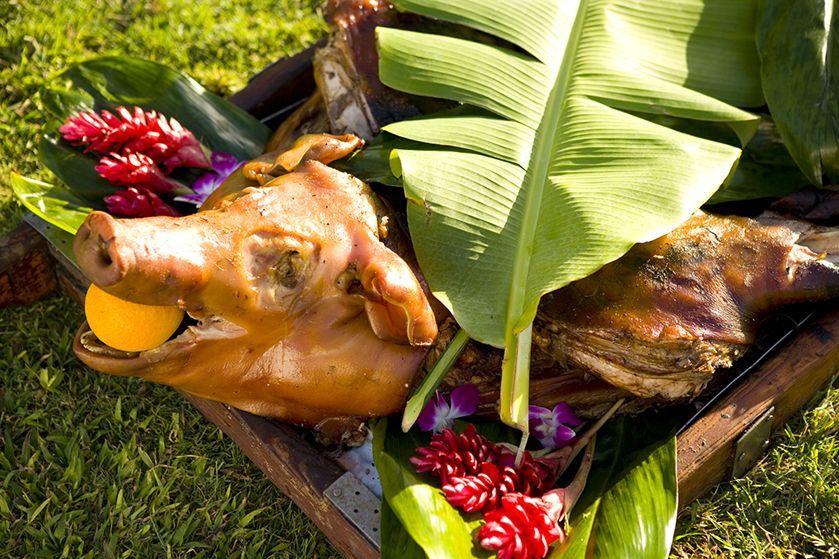
After taking part in Paradise Cove’s nightly Hawaiian Imu shows and ceremony and enjoying a hearty helping of delicious kalua pig, here’s quick and easy directions for turning your background into an underground oven that may make you the most popular person in your neighborhood!
1. Take one large pig: 200 to 300 pounds is a good weight to begin with. Clean it thoroughly both inside and out. Be sure to clean all the bristles off the outside. If not, it can be a little like eating a paintbrush. A steel brush can come in handy here. Liberally rub the pig – again both inside and out – with rough Hawaiian sea salt.
2. Dig a hole in your backyard: Don’t be skimpy; half the size of a medium swimming pool will do nicely. Line it with volleyball-size lava rocks (probably a hard-to-find item at the nearest hardware store) and build a big fire of kiawe wood (mesquite, if you live in Arizona).
3. Cut up 10-12 banana trees: Accept no substitutes. Banana stumps are used to line the imu to prevent burning and to create the steam needed to cook the pig. Save the leaves, we’ll use them later.
4. Put the pig in the ground: First you’ll have to stuff it with hot rocks, wrap it with banana leaves and then enclose it in a good grade of chicken wire. (The hardware store will probably have this.) The pig tends to fall apart when done – so without wrapping it – you’ll leave the main entrée in the pit. That’s messy and makes for very hot eating.
5. Close up the imu: At this time, put in any fish, taro, yams, or breadfruit you might have around the kitchen. Then cover the pig with alternating layers of wet burlap or canvas, banana leaves, canvas, leaves.and soil. Now, you can sit back under your mango tree and take a nap for a few hours.
6. Open the imu: Reverse the process and dinner is served! Invite some 50-100 of your closest friends and relatives over for a delicious kalua pig luau. By now, you’ll have had plenty of time to bake some taro, add a little water and pound it into poi – and, like we say in the islands, what’s a luau without poi?




